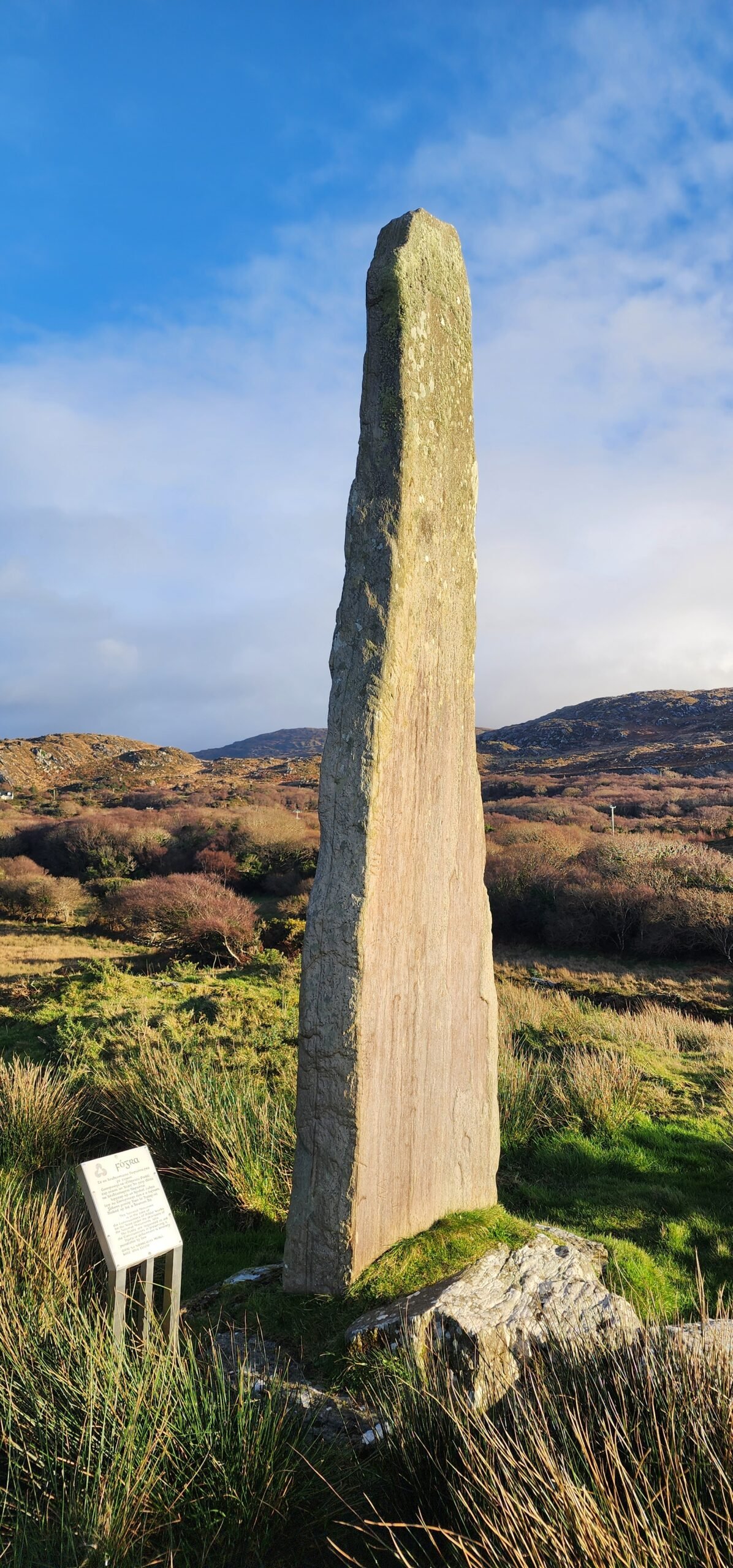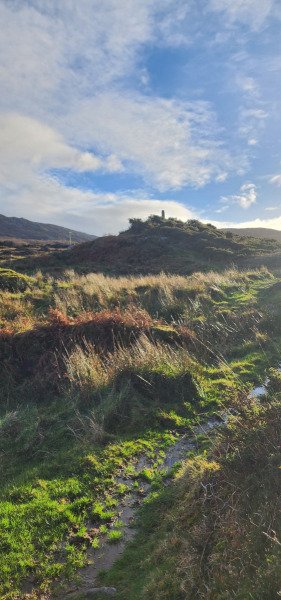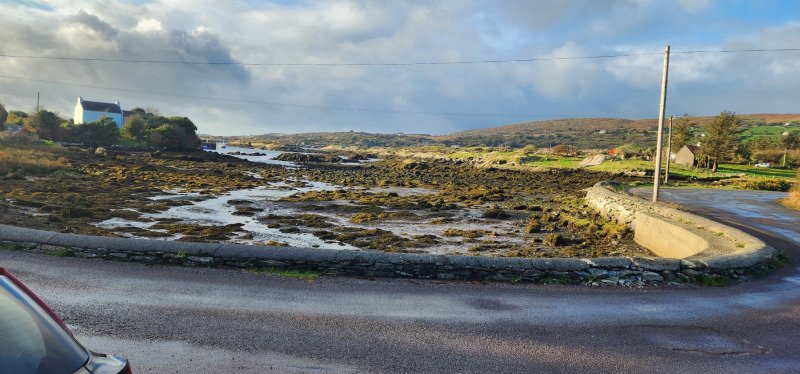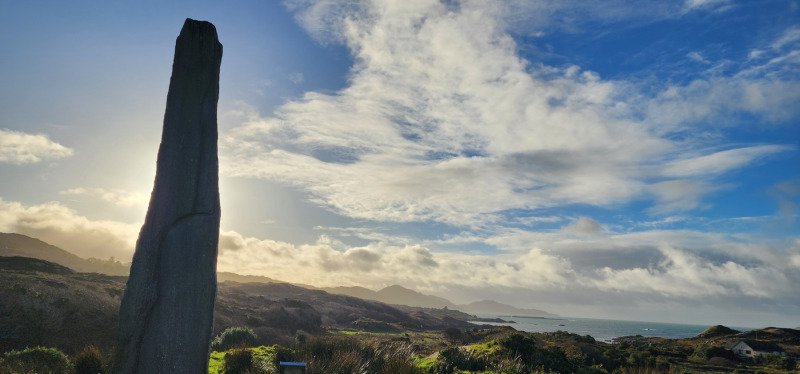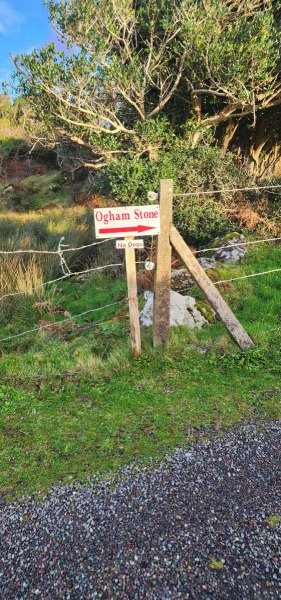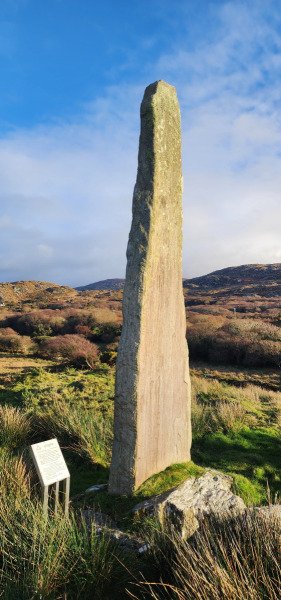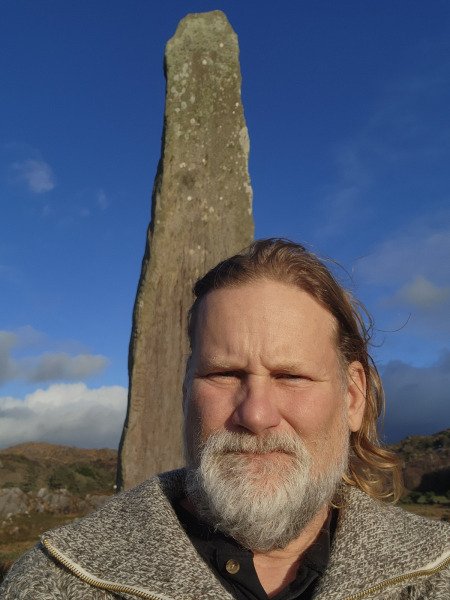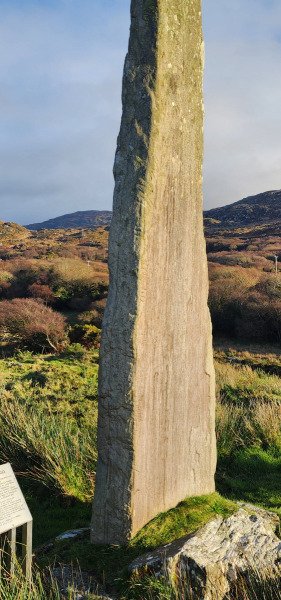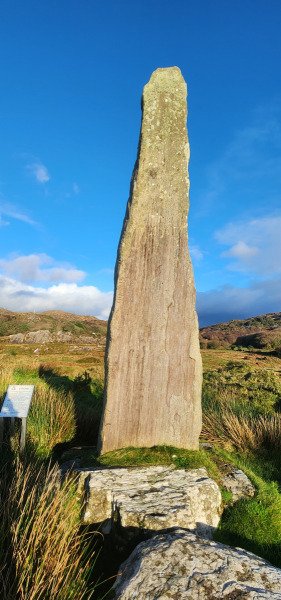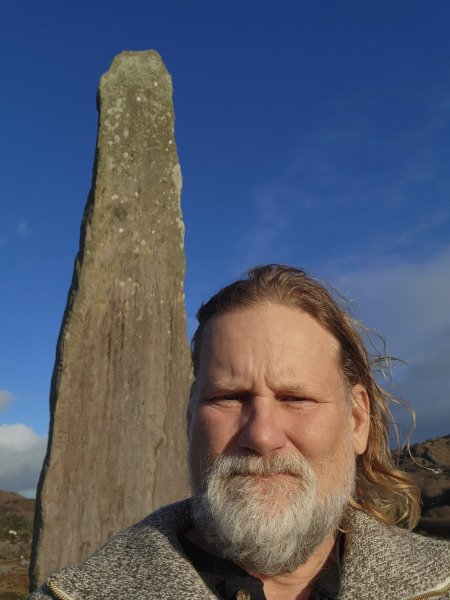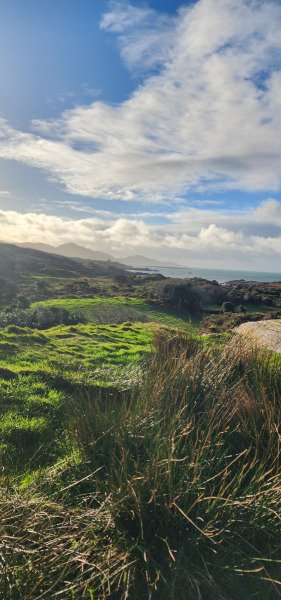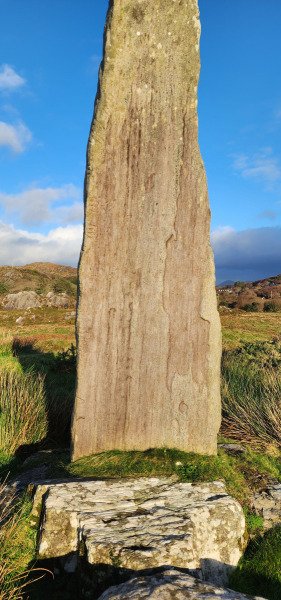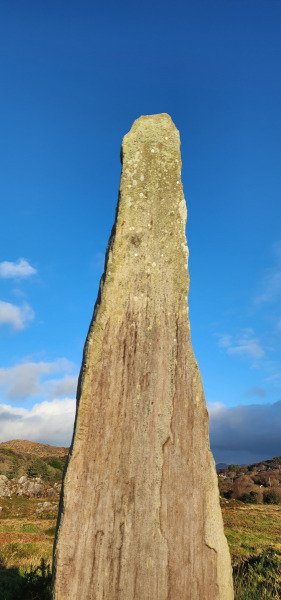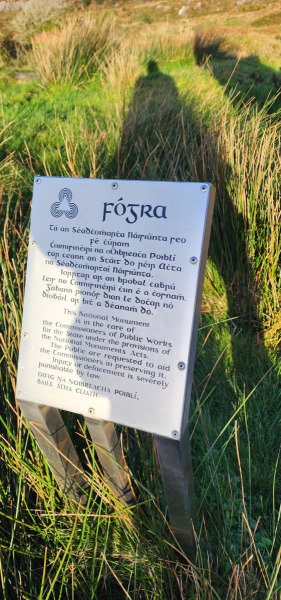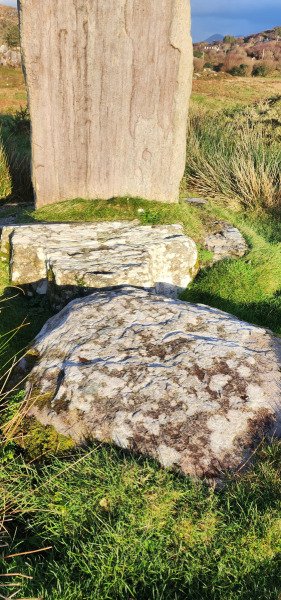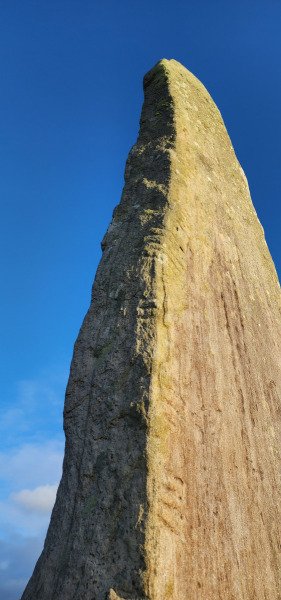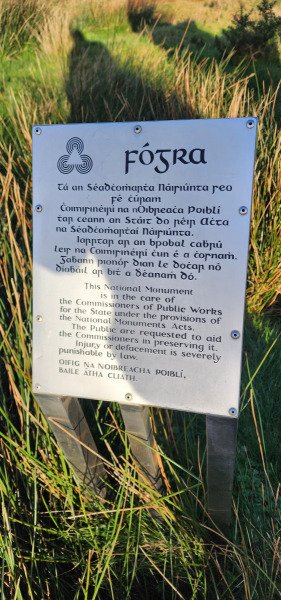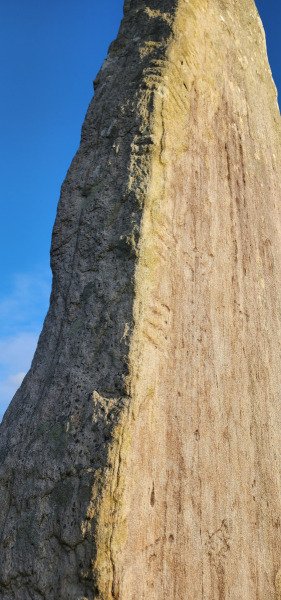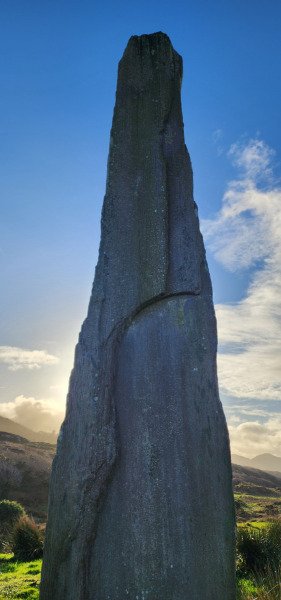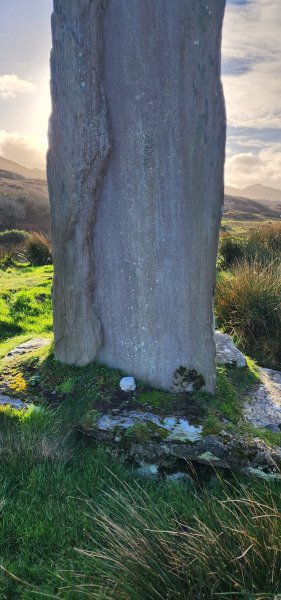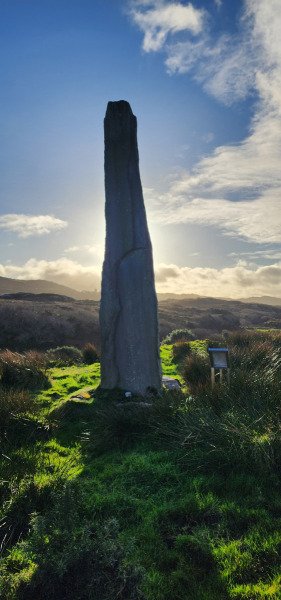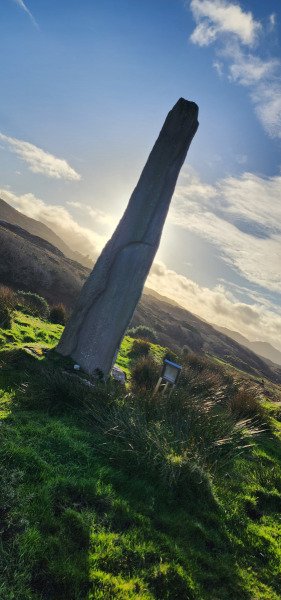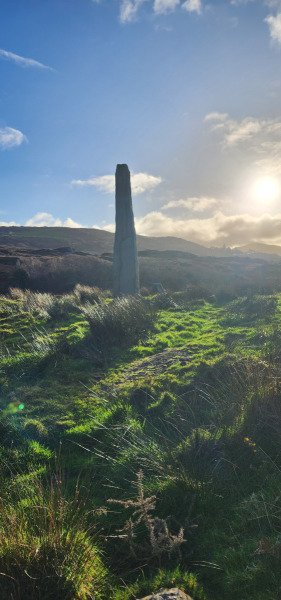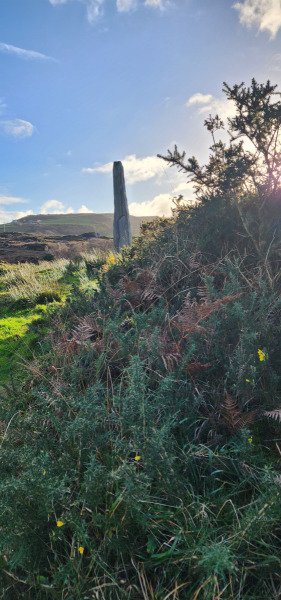Ballycrovane Ogham Stone or Beara Ogham Stone
(Béal A’Chorraigh Bháin)
Co. Cork, Southern Ireland
Irish grid ref: V 6569 5291
At this point in my journey, I was bouncing between West Cork and County Kerry, so I apologize for any content stating that this standing stone is in Kerry – it’s in West Cork. As I spied on the map, an Ogham Stone was outside of the Ballycrovane quay, so I took a gander. It is in the backyard of a private cottage with very few parking places without blocking the residents. They have an iron gate with a 2 Euro donation box to wander up to see the stone firsthand. It is a massage-pointed granite monolith atop a hillock overlooking the Ballycrovane Harbour, standing approximately 17 feet tall. The Ogham inscription purports to say “Son of Deich descendant of Torainn” (MAQUI DECCEDDAS AVI TURANIAS). There is also a modern national monument declaration plaque below.
The monument is a carved thin pillar-stone tall granite standing stone with an estimated age of over 2,000 years before the present. It is across the Ballycrovane Quay / Kenmare Bay from the Hag of Beara along the Ring of Beara on the Beara Peninsula. It is a few hundred yards southeast of the “Faunkill and the Woods” road and the coastguard station. This has been stated to be the tallest Ogham stone in Ireland and possibly Europe at 17 feet (5.3 meters), with another approximately several feet below the ground. The Ogham inscription is at the eastern edge, which is hard to see due to weathering.
The language Ogham was known as the only written language of the early Celts, a mnemonic device with an alphabetic interpretation that existed pre-Roman times until approximately the 5th century C.E. The script consists of a series of short notches or strokes carved vertically and slanting on the edges in other instances. A Latin translation of Ogham is believed to have allowed scholars to read the Ogham script alphabet. It is 30 letters of straight lines and notches carved on the edge of a piece of stone or wood, divided into four categories of five sounds. These symbols are found mainly on standing stones, though examples on wood and above lintels also exist. Most Ogham is found in Ireland (heavy in southern Ireland), but others are found in Great Britain, the Isle of Man, Cornwall, Scotland, and Wales.
Sources:
Ancient Stones 2012 Hags, Cats, and Stones on the Beara Peninsula. Website http://ancientstones.blogspot.com/2012/02/drumlave-stones-with-hungry-hill-in.html referenced 5/13/24.
Iles, Susanne 2007 The Ring of Beara Blog: Ballycrovane Ogham Stone. Website referenced https://ringofbeara.wordpress.com/2007/11/03/ballycrovane-ogham-stone/ on 5/13/24.
Journal of Antiquities. Website referenced https://thejournalofantiquities.com/2014/09/07/ballycrovane-ogham-stone-co-cork-southern-ireland/ on 5/13/24.
Oxford Press 1998 Dictionary of Celtic Mythology, Oxford University Press, New York, 1998.
Readers Digest 1992 Illustrated Guide to Ireland. The Reader’s Digest Association Limited, London.
Roaring Water 2014 Ballycrovane Ogham Stone. Website https://roaringwaterjournal.com/tag/ballycrovane-ogham-stone/ referenced on 5/13/24.
Scherman, Katherine 1981 The Flowering Of Ireland, Victor Gollancz Ltd., London.
